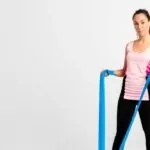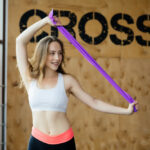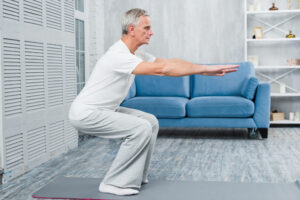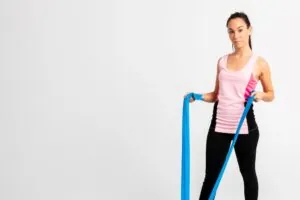If you’re looking to spice up your workout regimen and build some serious bicep muscle, you’ve come to the right place. Kettlebells offer a unique and effective approach to strength training, particularly for those looking to enhance their upper body strength and aesthetics. Unlike traditional dumbbells, kettlebells involve a combination of lifting and swinging motions that engage multiple muscle groups, making them an efficient tool for building strength, endurance, and muscle tone. In this guide, we’ll walk you through everything you need to know to get started with kettlebell bicep workouts, from selecting the right kettlebell to mastering key exercises that will pump up your biceps.
Tips for getting started
Selecting the appropriate kettlebell weight is crucial as it influences your ability to perform exercises with correct form and safe technique. For beginners, it’s advisable to start with lighter weights so they can focus on mastering the movement patterns without the risk of injury.
Basic kettlebell grip techniques
The foundation of effective kettlebell training lies in how you grip the handle. The two primary grips are:
- The hook grip: Encircle the handle with your fingers and thumb, securing a firm hold. This grip is fundamental for swings and lifts where the kettlebell moves about the hand.
- The bottoms-up grip: Hold the kettlebell with the bottom up, keeping the handle aligned with your forearm. This grip increases wrist and forearm strength and is excellent for stabilization exercises.
Core kettlebell bicep exercises
Exercise 1: Kettlebell curls
Much like traditional curls, kettlebell curls focus intensely on the bicep muscles. To perform a kettlebell curl:
- Stand with your feet shoulder-width apart, holding a kettlebell in one hand with an underhand grip.
- Curl the kettlebell towards your chest, keeping your elbow close to your body and your palm facing upwards.
- Slowly lower the kettlebell back to the starting position. Repeat for 8-12 reps before switching arms.
Exercise 2: Hammer curls
Hammer curls with a kettlebell are excellent for targeting both the biceps and forearms:
- Grip the kettlebell by the handle with your thumb wrapped around it in a hammer grip.
- Curl the weight as you keep your palm facing your body throughout the movement.
- Focus on squeezing your biceps at the top of the curl before gently lowering the kettlebell back down. Alternate arms for 8-12 reps on each side.
Exercise 3: Kettlebell clean
While primarily known as a full-body exercise, the kettlebell clean also engages the biceps significantly during the lift phase:
- Begin in a squat position with a kettlebell between your feet.
- Pull the kettlebell off the floor by extending your legs while simultaneously pulling with your arm, keeping the bell close to your body.
- Once the kettlebell reaches chest height, rotate your wrist and bring the kettlebell to a resting position at the front of your shoulder.
- Return to the starting position and repeat. Perform 6-10 reps on each side.
Exercise 4: Alternating kettlebell curls
Alternating kettlebell curls add a dynamic component, challenging your coordination and engaging the core:
- Hold a kettlebell in each hand with an underhand grip.
- Alternately curl each kettlebell towards your chest, maintaining a steady and controlled motion.
- Ensure that only your forearms are moving, keeping your elbows locked at your sides. Perform 8-12 reps per arm.
If you need more ideas on how to boost your workouts, make sure to get in touch with our personal trainers in Brunswick.
And if you’re pressed for time, try these five quick kettlebell arm workouts.
Final thoughts
As you progress, remember the importance of consistency and proper form. Regularly incorporating these kettlebell exercises into your routine can lead to significant improvements in bicep size and strength, as well as enhanced coordination and stability. The versatility of kettlebells also makes them a valuable tool for full-body workouts, so feel encouraged to explore beyond just bicep exercises.







